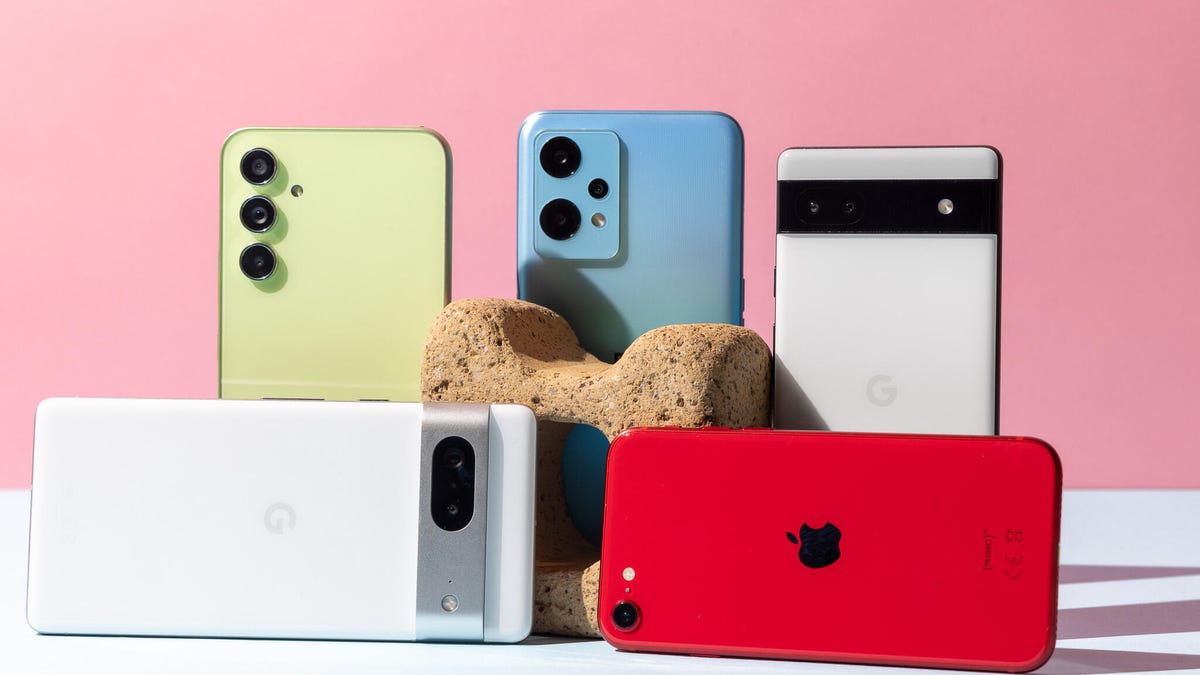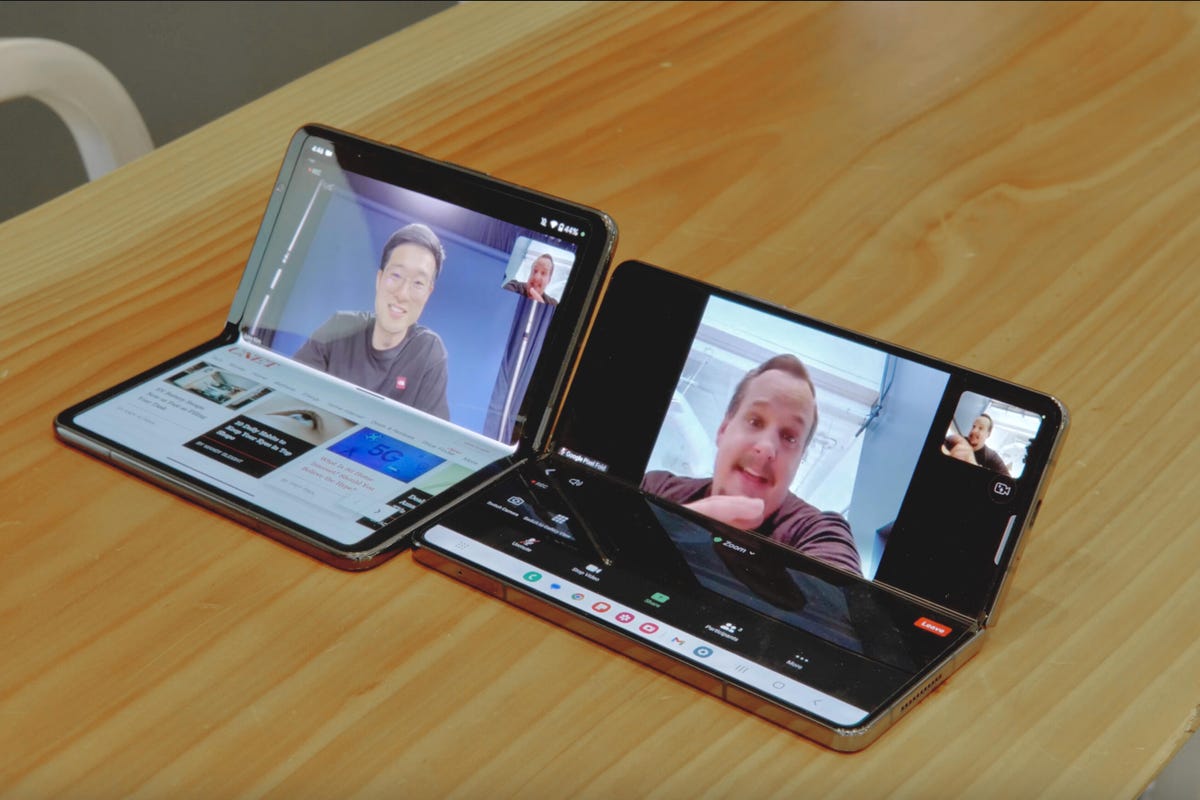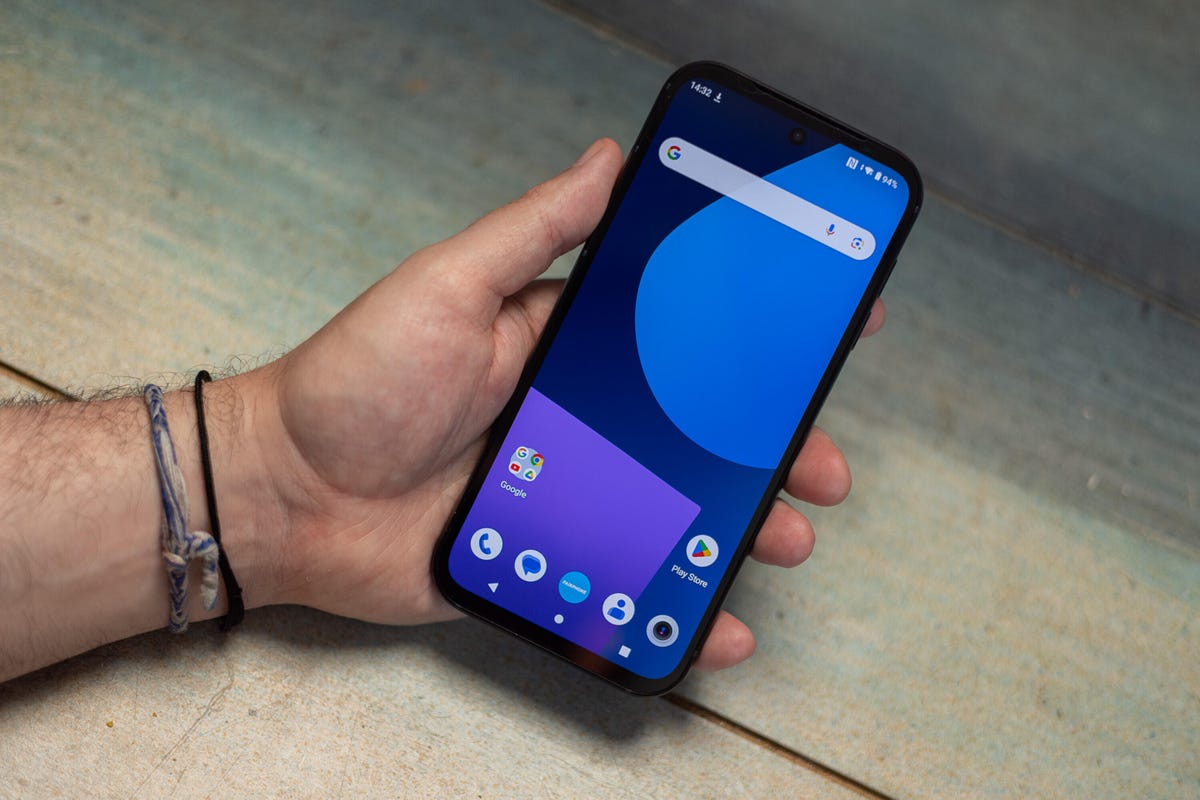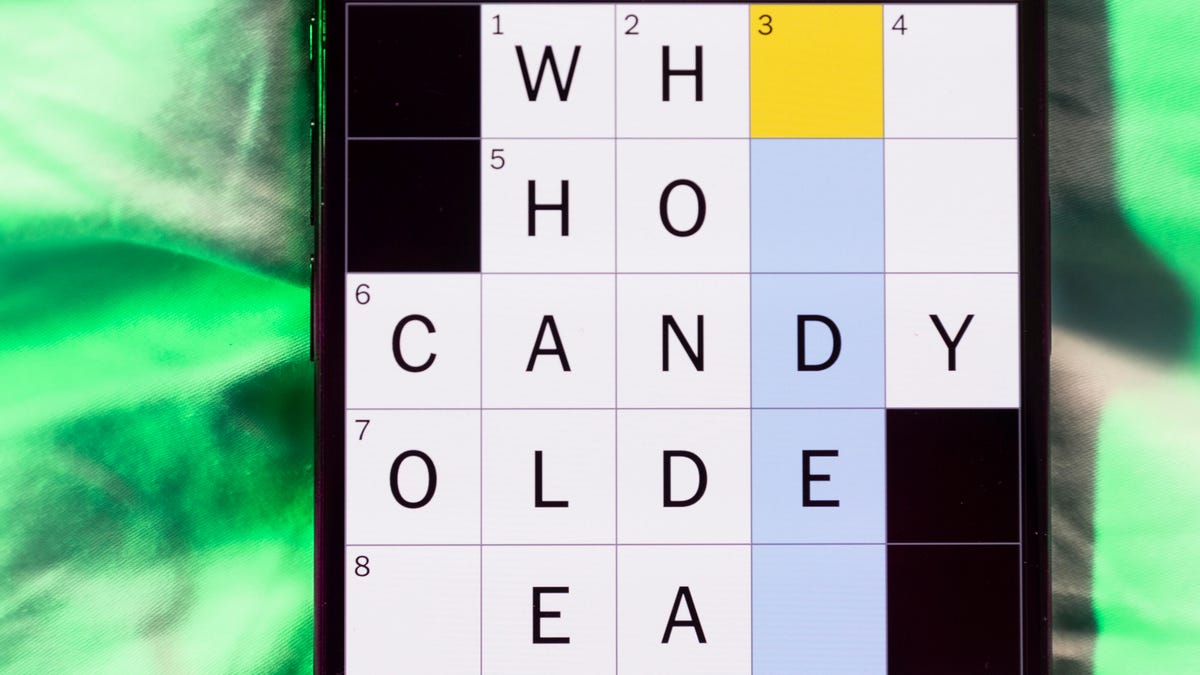Technologies
Your Next Phone Will Likely Be Smarter, Faster and More Bendy
Annual phone upgrades often feel mundane, but in 2023, phone-makers found new ways to make mobile devices fresh and interesting.

Your phone could get a major upgrade in 2024 — and it could go beyond the routine camera and processor changes we’ve seen in mobile devices over the past decade.
New AI-fueled features could make phones much smarter, potentially turning them into capable personal assistants rather than pocket-sized portals to the internet. In addition, foldable phones are inching closer to their breakout moment thanks to clever design improvements, cementing their place in the smartphone market. Taken together, these changes could make your next phone feel like much more than just another rectangle made of glass and metal.
«That newness … is really key,» said Peter Jarich, head of mobile industry research firm GSMA Intelligence. «And I think folding form factors are part of that.»
While AI and foldable screens may be crucial to where smartphones are going, we’re also seeing notable leaps in areas that directly affect how you use your phone today. Charging speeds are faster, meaning you no longer have to carve out as much time to top off your phone. Tech companies are also making their products more sustainable in ways that could potentially make your phone last longer, lessening their impact on the environment and possibly benefiting your wallet.
These jolts of excitement are much needed for an industry that’s been in decline. In 2022, low demand combined with economic challenges resulted in a smartphone market that saw its lowest annual shipment total since 2013, according to the International Data Corporation. Data from insurance provider Assurant also suggests that phone owners are holding onto their devices for longer, although that could be a testament to how phones have improved over the last decade. Analysis from Consumer Intelligence Research Partners tells a similar story, indicating that more people upgraded from iPhones that were at least 3 years old in 2023 compared with 2019, when the majority of upgraders came from 2-year-old devices.
«People were really struggling to see the value,» said Aaron West, senior analyst for market research firm Omdia. «Why upgrade when my phone from two years ago is almost identical?»
Now that smartphones have become ubiquitous and are more utilitarian than novel, it takes more to impress audiences. That held true in 2023, when it became clear that smartphones were starting to regain their wow factor. More recent data from the IDC suggests smartphone shipments started picking up again as 2023 drew to a close, perhaps signaling that new phones are catching our interest again.
AI is coming for your phone in 2024

Artificial intelligence has played an important part in smartphones for years, particularly when it comes to features like facial recognition, photography and language translation. However, generative AI — the tech that powers ChatGPT and creates answers based on training data in response to prompts — brings new capabilities that go beyond unlocking your phone or blurring the background of a photo. Instead of working passively in situations like these, generative AI-powered features are meant to be used in more proactive ways.
«It’s not behind the scenes,» West said. «It’s really obvious that your phone is actually doing something and generating something new and original.»
Google showcased this with the October launch of its Pixel 8 lineup, which uses AI to power new photo editing tricks, like moving and resizing individual subjects and altering facial expressions. Google’s new phones can also generate fresh wallpaper based on specific themes from scratch, and the search giant is injecting Google Assistant with generative AI. Called Google Assistant with Bard, the upgraded virtual helper will be able to handle tasks such as summarizing important points from your email inbox and writing social media captions for your photos. It’ll be available for both Android devices and iPhones.
Qualcomm, which creates the chips that power phones from companies including Samsung and OnePlus, designed its new mobile processor around generative AI. The Xiaomi 14 and 14 Pro, the latest flagship devices from the world’s third-largest phone manufacturer, according to IDC, are among the first devices to be powered by this new Snapdragon 8 Gen 3 chip. We’re expecting to see Qualcomm’s latest processor in more phones throughout the year.
A teaser video showing Qualcomm’s vision for generative AI on smartphones provides a few examples of how the tech could manifest in mobile devices, such as a virtual assistant that can extract key points from a phone call and create a bulleted summary.
The new chip will also make it possible to zoom out on an image taken on your phone and generate details to expand the frame, making it look like you took the photo using an ultrawide lens. Features like these are more than just photo-editing tools; they help create entirely new photos that weren’t possible at the time of capture.
«It changes how we think about the devices, the [operating system] and the apps, and how you actually define a user experience,» Cristiano Amon, CEO and president of Qualcomm, said on stage during the company’s Snapdragon Summit in October.

We could get an even closer look at how AI will change smartphones as early as this month on Jan. 17, when Samsung will announce its next major phone, presumably called the Galaxy S24. Samsung hasn’t said much about its future product lineup, but it did recently announce a new AI experience for phones called Galaxy AI and its own generative AI model. Galaxy AI will include a feature called AI Live Translate Call that can translate audio in real time, although the company hasn’t revealed many details yet.
Apple is expected to infuse its next major iPhone update, likely arriving in September, with new AI features too, according to Bloomberg. That could entail auto-generated playlists in Apple Music and more generative AI features in Messages and Siri.
If generative AI lives up to the hype, it could make phones more like smart personal assistants and less like tiny laptops with touchscreens, West said.
«It’s like actually being able to preempt your needs before you actually ask for them,» he said.
Foldable phones may be inching toward their breakout moment

It’s not just the brains of our phones that are evolving; it’s their shapes, too. Phones that can fold in half have been widely available since 2019, yet they still only account for a fraction of smartphone usage. But in the US, companies including Samsung, Google, Motorola and OnePlus made efforts to change that throughout 2023, resulting in a banner year for foldable phones.
While Samsung used to be the only major player in the foldable phone market, nearly every smartphone-maker now offers one. Google released its first foldable phone in June, while OnePlus introduced its inaugural foldable device in October, meaning those interested in foldables now have more than twice as many options as they did in 2022.
Beyond more choice, the quality of foldable phones improved in 2023, too — particularly when it came to flip phones. The Motorola Razr Plus and Samsung Galaxy Z Flip 5 each gained a larger external cover screen, making them more useful when closed and further justifying their premium prices. As I wrote after reviewing both devices, these new flip phones prove the promise of having phones with two screens that can serve different purposes, which is more compelling than simply being able to fold your device in half.

The biggest barrier keeping foldable phones from wider adoption is their high prices, with the Galaxy Z Flip 5 and Motorola Razr Plus each regularly priced at $1,000 in the US. If you want a foldable device that combines the experience of using a tablet and a phone, you’ll have to cough up an eye-watering $1,800 for the Samsung Galaxy Z Fold 5 or Google Pixel Fold.
But foldables took a step toward becoming more affordable in 2023, which could go a long way toward making them more accessible. Motorola launched a cheaper Razr this year that’s regularly priced at $700, putting it on par with nonfolding phones.

In 2024 and beyond, foldable phones are expected to grow in popularity, with shipments forecasted to surpass 100 million units by 2027, according to Counterpoint Research. That’s compared with roughly 20 million units expected to ship in 2023, as the IDC reports. The growth comes at a time when the overall smartphone market has been shrinking, with the IDC reporting a 0.1% decline in shipments in the third quarter of 2023.
«The industry had just been selling black glass slabs, with maybe a different back or a different color and different camera capabilities, but they were really very much similar devices,» Jarich said. «And for your average consumer, foldables give you a new reason to engage.»
Phones that can charge faster and last longer

Foldable screens and smarter AI assistants aren’t all that useful if your phone’s battery can’t make it through the day. While battery life largely remained the same in 2023 compared with previous years, some smartphone-makers shortened the time it takes to replenish your phone’s battery.
One such example comes from the new Xiaomi 14 phone, which has faster 90-watt charging compared with the previous version’s 67-watt charging.
Android cult favorite OnePlus typically stands out for its speedy charging, and 2023 was no exception. The OnePlus 11 supports 80-watt charging in the US and 100 watts in the UK, a significant upgrade from the OnePlus 10 Pro’s respective 65- and 80-watt charging speeds. The Lenovo ThinkPhone by Motorola also impressed us with its 68-watt fast charging that takes it from empty to 92% in 30 minutes, as my colleague Patrick Holland discovered when reviewing it.
Faster charging combined with more energy-efficient chips helped make up for any lack of progress in battery technology, Jarich said.
«And so from a battery perspective, it’s not like that’s no longer an issue,» he said. «But the same issues are being solved in different places.»

With new premium smartphones from companies such as Apple and Samsung costing upward of $1,000, brand-new mobile devices should be built to last. While there’s still a lot of progress to be made in this area, smartphones took small but important strides in 2023.
Apple and Samsung, for example, each expanded their self-repair programs. Apple broadened its program to include the iPhone 14 and 15 lineup while Samsung spread its program to countries including Brazil, Mexico and Korea. Samsung also added its latest foldable phones, the Galaxy Z Flip 5 and Galaxy Z Fold 5, to the self-repair program in late 2023. It’s a positive sign even for those who aren’t tech savvy enough to fix their own phones.
«They recognize it’s probably a bit beyond them, but it does make it easier for third parties to do it,» Jarich said of self-repair programs and more repairable designs.
The iPhone 15 also has a new internal chassis structure that makes it more repairable.
Amsterdam-based sustainable tech company Fairphone launched a new phone in 2023 for the first time in two years, proving there are options out there for those who value repairability and sustainably sourced materials in a phone. With eight years of software updates and a five-year warranty, Fairphone is raising the bar for what it means to build a long-lasting phone.
Google also extended software support for its new Pixel phones and will now provide seven years of Android operating system and security updates. That’s a big jump from the three years of Android updates and five years of security updates it previously offered, and it could push other phone-makers to do the same.

We’ll have to wait and see whether technologies like generative AI and foldable screens will make a big impact on mobile devices. Before ChatGPT’s arrival in November 2022, the tech world was enamored with the metaverse, not generative AI. And before 2019, the idea of a foldable phone seemed like little more than a futuristic concept.
But if one thing is certain, it’s that phone-makers are thinking more broadly about how to push the smartphone experience forward beyond just improving the camera or increasing the screen size.
Editors’ note: CNET is using an AI engine to help create some stories. For more, see this post.
Technologies
Today’s NYT Mini Crossword Answers for Friday, Dec. 26
Here are the answers for The New York Times Mini Crossword for Dec. 26.

Looking for the most recent Mini Crossword answer? Click here for today’s Mini Crossword hints, as well as our daily answers and hints for The New York Times Wordle, Strands, Connections and Connections: Sports Edition puzzles.
Need some help with today’s Mini Crossword? Some of the clues are tough today — I thought maybe 1-Across was referring to the Grinch, or even Oscar the Grouch, but was I ever wrong! Read on for all the answers. And if you could use some hints and guidance for daily solving, check out our Mini Crossword tips.
If you’re looking for today’s Wordle, Connections, Connections: Sports Edition and Strands answers, you can visit CNET’s NYT puzzle hints page.
Read more: Tips and Tricks for Solving The New York Times Mini Crossword
Let’s get to those Mini Crossword clues and answers.
Mini across clues and answers
1A clue: Furry and green, say
Answer: MOSSY
6A clue: State known for its potatoes
Answer: IDAHO
7A clue: Like a faithful friend
Answer: LOYAL
8A clue: Had a beverage
Answer: DRANK
9A clue: Pronoun frequently paired with «her»
Answer: SHE
Mini down clues and answers
1D clue: Not spicy, as salsa
Answer: MILD
2D clue: Reasons for wrinkled noses
Answer: ODORS
3D clue: Words from a doctor checking your tonsils
Answer: SAYAH
4D clue: Comedian Gillis
Answer: SHANE
5D clue: Part of an egg used to make hollandaise sauce
Answer: YOLK
Don’t miss any of our unbiased tech content and lab-based reviews. Add CNET as a preferred Google source.
Technologies
Today’s NYT Connections: Sports Edition Hints and Answers for Dec. 26, #459
Here are hints and the answers for the NYT Connections: Sports Edition puzzle for Dec. 26, No. 459.

Looking for the most recent regular Connections answers? Click here for today’s Connections hints, as well as our daily answers and hints for The New York Times Mini Crossword, Wordle and Strands puzzles.
Today’s Connections: Sports Edition is a tough one. That purple category once again has players looking for a different, but related, hidden word in four of the clues. If you’re struggling with today’s puzzle but still want to solve it, read on for hints and the answers.
Connections: Sports Edition is published by The Athletic, the subscription-based sports journalism site owned by The Times. It doesn’t appear in the NYT Games app, but it does in The Athletic’s own app. Or you can play it for free online.
Read more: NYT Connections: Sports Edition Puzzle Comes Out of Beta
Hints for today’s Connections: Sports Edition groups
Here are four hints for the groupings in today’s Connections: Sports Edition puzzle, ranked from the easiest yellow group to the tough (and sometimes bizarre) purple group.
Yellow group hint: Big Apple jock.
Green group hint: College football fun.
Blue group hint: On the road.
Purple group hint: Hunt down a word in other words.
Answers for today’s Connections: Sports Edition groups
Yellow group: A New York athlete.
Green group: Bowl games.
Blue group: Associated with a team road trip.
Purple group: Ends in a movement verb.
Read more: Wordle Cheat Sheet: Here Are the Most Popular Letters Used in English Words
What are today’s Connections: Sports Edition answers?
The yellow words in today’s Connections
The theme is a New York athlete. The four answers are Islander, Net, Ranger and Yankee.
The green words in today’s Connections
The theme is bowl games. The four answers are Alamo, Gator, Liberty and Pinstripe.
The blue words in today’s Connections
The theme is associated with a team road trip. The four answers are bus, flight, hotel and visiting locker room.
The purple words in today’s Connections
The theme is ends in a movement verb. The four answers are foxtrot (trot), newsprint (sprint), terrace (race) and thunderbolt (bolt).
Don’t miss any of our unbiased tech content and lab-based reviews. Add CNET as a preferred Google source.
Technologies
Today’s NYT Connections Hints, Answers and Help for Dec. 26, #929
Here are some hints and the answers for the NYT Connections puzzle for Dec. 26 #929

Looking for the most recent Connections answers? Click here for today’s Connections hints, as well as our daily answers and hints for The New York Times Mini Crossword, Wordle, Connections: Sports Edition and Strands puzzles.
Today’s NYT Connections puzzle is full of fun pop-culture references. Read on for clues and today’s Connections answers.
The Times has a Connections Bot, like the one for Wordle. Go there after you play to receive a numeric score and to have the program analyze your answers. Players who are registered with the Times Games section can now nerd out by following their progress, including the number of puzzles completed, win rate, number of times they nabbed a perfect score and their win streak.
Read more: Hints, Tips and Strategies to Help You Win at NYT Connections Every Time
Hints for today’s Connections groups
Here are four hints for the groupings in today’s Connections puzzle, ranked from the easiest yellow group to the tough (and sometimes bizarre) purple group.
Yellow group hint: Golden state cliches.
Green group hint: Funny films.
Blue group hint: Rock on.
Purple group hint: Not white.
Answers for today’s Connections groups
Yellow group: California-based character tropes.
Green group: Comedy subgenres.
Blue group: ’70s rock bands.
Purple group: Black ____.
Read more: Wordle Cheat Sheet: Here Are the Most Popular Letters Used in English Words
What are today’s Connections answers?
The yellow words in today’s Connections
The theme is California-based character tropes. The four answers are movie exec, surfer, tech bro and Valley Girl.
The green words in today’s Connections
The theme is comedy subgenres. The four answers are buddy, cringe, screwball and stoner.
The blue words in today’s Connections
The theme is ’70s rock bands. The four answers are America, Chicago, Foreigner and Journey.
The purple words in today’s Connections
The theme is black ____. The four answers are Forest, Friday, Panther and Widow.
Don’t miss any of our unbiased tech content and lab-based reviews. Add CNET as a preferred Google source.
-

 Technologies3 года ago
Technologies3 года agoTech Companies Need to Be Held Accountable for Security, Experts Say
-

 Technologies3 года ago
Technologies3 года agoBest Handheld Game Console in 2023
-

 Technologies3 года ago
Technologies3 года agoTighten Up Your VR Game With the Best Head Straps for Quest 2
-

 Technologies4 года ago
Technologies4 года agoBlack Friday 2021: The best deals on TVs, headphones, kitchenware, and more
-

 Technologies4 года ago
Technologies4 года agoVerum, Wickr and Threema: next generation secured messengers
-

 Technologies4 года ago
Technologies4 года agoGoogle to require vaccinations as Silicon Valley rethinks return-to-office policies
-

 Technologies4 года ago
Technologies4 года agoOlivia Harlan Dekker for Verum Messenger
-

 Technologies4 года ago
Technologies4 года agoiPhone 13 event: How to watch Apple’s big announcement tomorrow
